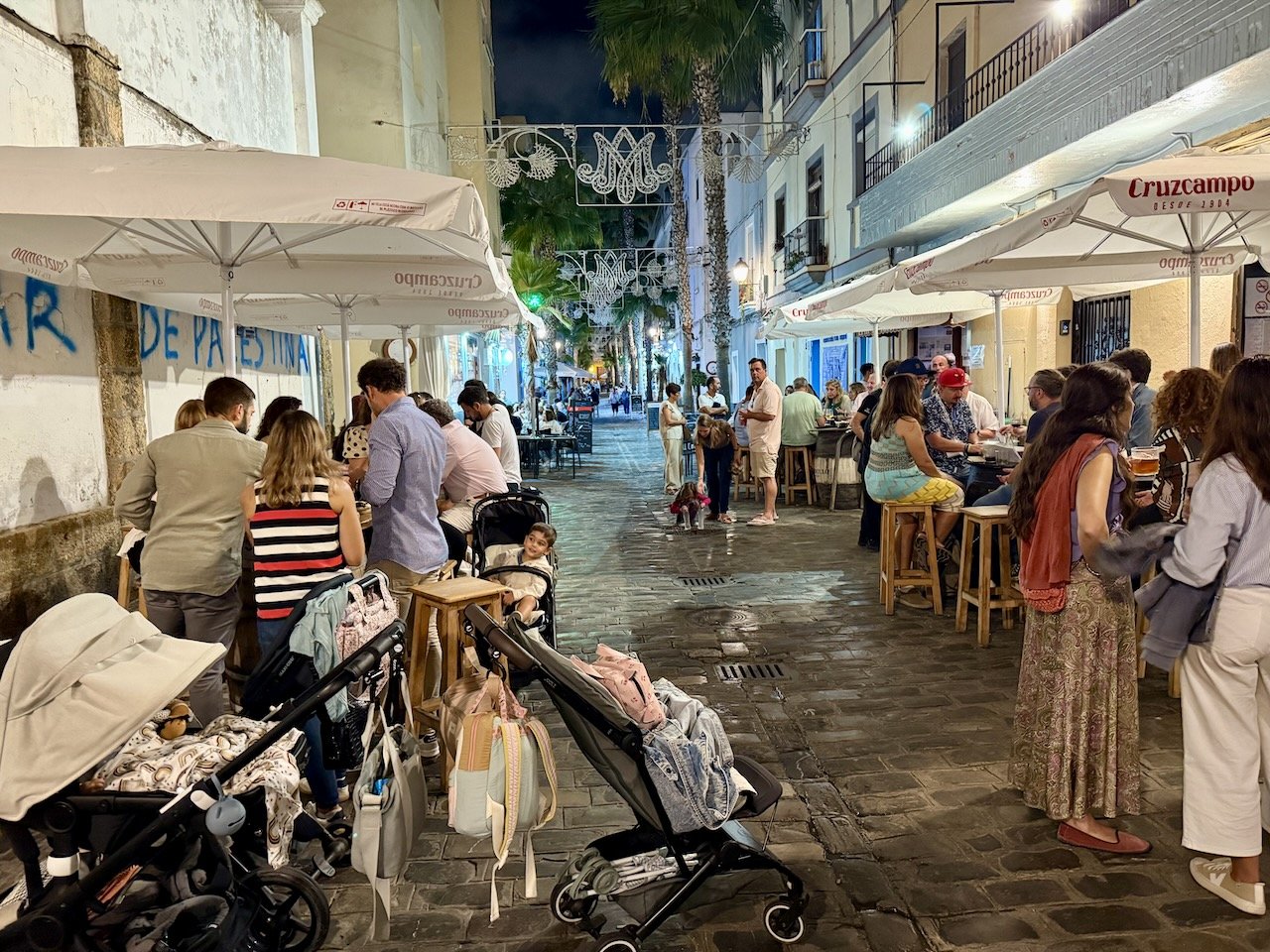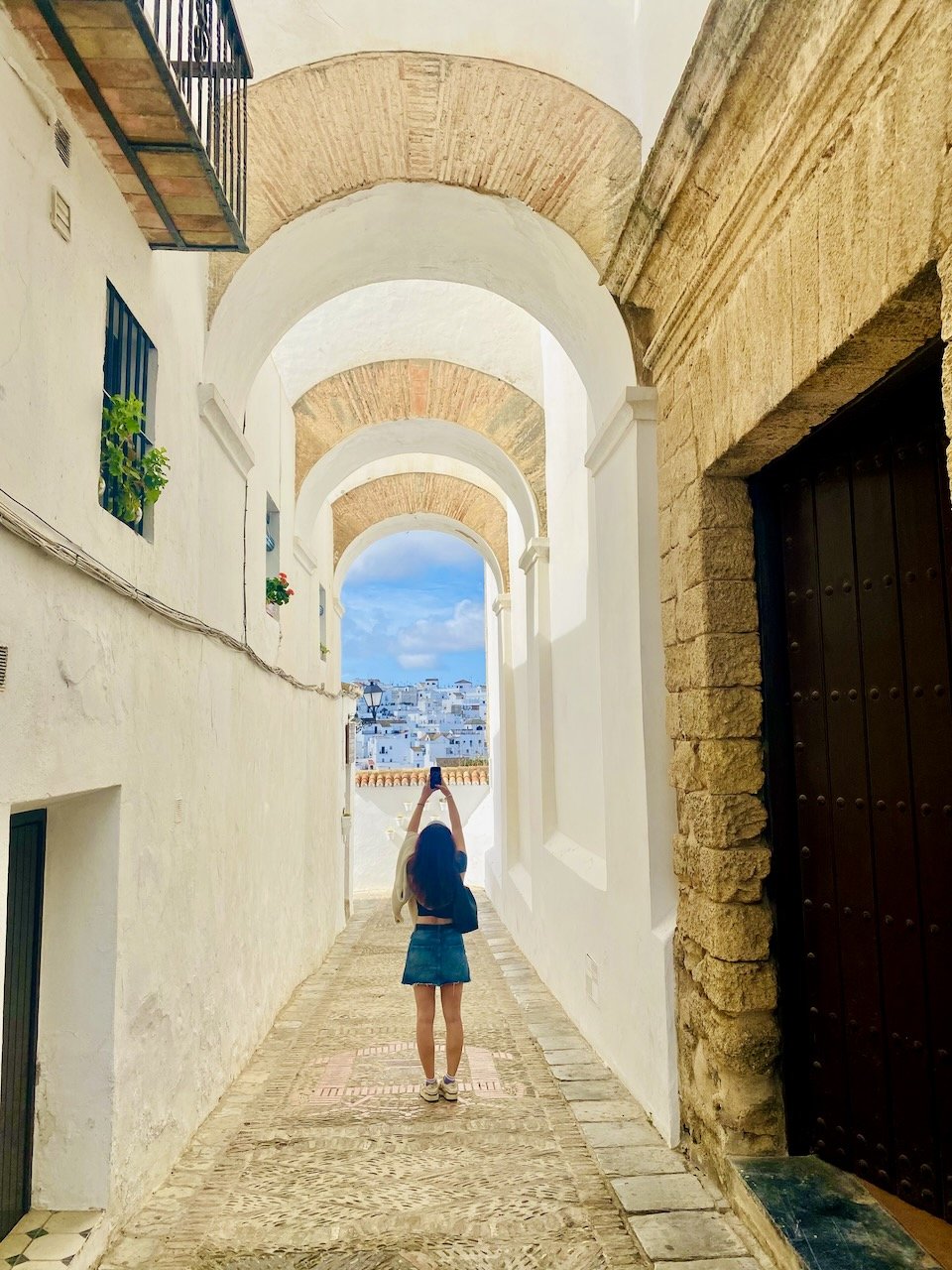Costa de la Luz in autumn: Andalucia’s hidden gems
Autumn in Andalucia offers a quieter and more serene way to experience the stunning landscapes, history, and culture of southern Spain. While a little further north, the famous cities like Seville (see our 7 Places for Seville in Autumn), Cordoba and Granada draw in most of the crowds, I want to focus on the southernmost part of Andalucia, the Costa de la Luz, where the light is at its most golden and where there are some real hidden gems that often go unnoticed. Expect Roman ruins, unspoilt beaches, artisan villages, and panoramic hilltop views. Let’s explore seven places in Andalucia that showcase its beauty and spirit.
The 7 Places to discover on the Costa de la Luz (Andalucia)
1 | Jerez de la Frontera – watch the show horses train
Amazing equestrian shows in Jerez (Credit: El Pantera, CC BY-SA 3.0)
We’re starting our recommendations to the west of the Costa de la Luz, slightly inland at Jerez de la Frontera. Jerez is world-famous for its sherry, but another tradition that thrives here is equestrian art. At the Royal Andalucian School of Equestrian Art, you can witness the majestic Andalucian horses in training. Their grace and power are captivating, and watching these beautiful creatures perform their classical riding routines is an experience that will stay with you long after your trip. And whilst you are in Jerez, make some time to taste the different sherry!
2 | Tapas in the Mercado Central de Abastos – Cádiz
Tapas bars near the market in Cadiz (Credit: DMR)
No visit to Andalucia would be complete without diving into its vibrant food scene, and in Cádiz, the Mercado Central de Abastos is the best place to do just that. This fish market is one of the most authentic (what I mean is that it is still used by the locals and is not very touristy at all) and it brims with fresh local seafood and other regional produce. Down one side of the market there are 10 or more small tapas and drinks kiosks where you can enjoy delicious tapas such as prawns, octopus, and boquerones (anchovies). Also, the drinks are very good value in the market (€1 for a beer). Cádiz is the oldest city in western Europe (it was settled by Phoenecians around 3000 b.c.) and has a lot more to offer – check out our guide to the 7 Places you need to see in Cadiz.
3 | Medina Sidonia – A hidden hilltop gem
Medina Sidonia (Credit: Diptución de Cádiz CC BY-NC-SA 2.0)
For those who want to escape the coastal crowds, Medina Sidonia offers a peaceful retreat into Andalucian history. This hilltop village has a wonderful mix of Moorish, Roman, and mediaeval influences making it a delight to just wander through its narrow streets. Make sure to visit the impressive Iglesia de Santa María la Mayor, and take in the sweeping views from the castle ruins. It’s a hidden gem for those seeking tranquillity and culture off the beaten path.
4 | Vejer de la Frontera – art, crafts, and stunning architecture
Instagrammable moments everywhere you look (Credit: DMR)
I know, I know… two hilltop villages in my 7 places. But they are both extremely worthwhile. Medina Sidonia is a little more inland, so if you can’t be bothered to drive as much and want to stick closer to the coast, then go for Vejer de la Frontera, one of Andalucia’s stunning Pueblos Blancos. Wander its cobbled streets, where white-washed houses adorned with vibrant flowers create many instagrammable vistas. This village is a hub for local artisans, so be sure to explore its craft shops, with beautiful ceramics and textiles. Take a break in the lovely Plaza de España, shaded by palm trees, and enjoy the calm atmosphere while soaking in panoramic views of the countryside.
5 | Playa de los Alemanes – Andalucia’s tranquil beach
White sand, turquoise water (Credit: Benjamincebrian, CC BY-SA 3.0)
There are so many beaches to pick from along the Costa de la Luz, but for a quieter, more tranquil beach experience, head to Playa de los Alemanes. The beach’s golden sands and crystal-clear waters are framed by cliffs, offering seclusion and beauty. This is a place to unwind, swim, or simply sunbathe far from the usual tourist spots – it is quiet mainly because it is a bit of a pain to drive to. It’s the perfect beach escape if you’re looking for something more peaceful during your Andalucian exploration.
6 | Roman ruins of Baelo Claudia – Bolonia
Full sized Roman city lies in ruins in the middle of nowhere (Credit: DMR)
Do not miss Bolonia – a tiny village that is home to the well-preserved Roman ruins of Baelo Claudia, an ancient city set against the Atlantic coast. I don’t know of anything that comes close to how impressive this is. And it’s free to visit! Wandering through the amphitheatre, temples, and forum, you can get a real sense of how bustling this Roman settlement once was. After diving into history, head to Playa de Bolonia nearby for a peaceful break on one of Andalucia’s most idyllic beaches or grab a drink and snack at the chiringuito (beach cafe).
7 | Tarifa – Where the Atlantic meets the Mediterranean
Calm med on the left and wild Atlantic on the right (Credit DMR)
Further along the coast, Tarifa is where two mighty seas, the Atlantic Ocean and the Mediterranean, meet. Known for its winds, it’s a top spot for kitesurfing and windsurfing, and you can clearly see the coast of Africa across the Strait of Gibraltar. Stroll along Punta de Tarifa to watch the dramatic convergence of the two seas, or visit the historic Castillo de Guzmán el Bueno for a different perspective on this unique coastal town. Tarifa has a really lovely chilled out, surf-type vibe and the old town is packed with great tapas bars and restaurants (one of our favourite is Bar el Francés).
Your Coasta de la Luz Challenge | Climb the Duna de Bolonia
Perspective is deceptive – that dune is actually really steep (Credit: DMR)
After exploring the Roman ruins in Bolonia, challenge yourself with a hike up the Duna de Bolonia, a towering natural sand dune that offers spectacular views over the ruins, beach, and surrounding coastline. It’s a bit of a climb, but well worth it once you reach the top, with the panoramic views as your reward.
Difficulty rating: 2/3 – A moderate challenge, but manageable if you’re reasonably fit.
Travel Essentials
Getting around this part of Andalucia is easiest by car, as many of these hidden spots aren’t well served by public transport. The roads are generally good, and car rental is widely available at airports like Málaga or Jerez. While English is spoken in many tourist areas, some knowledge of basic Spanish will be helpful, particularly in smaller towns and villages. Andalucia is safe for travellers, with no specific health risks, and mosquitoes are generally not a concern in the autumn months. As for weather, expect mild days, especially along the coast, with the occasional windy afternoon in places like Tarifa.
Why Visit in Autumn?
Autumn is an ideal time to explore Andalucia and the Coast de la Luz. The summer heat has softened, making it more comfortable for walking tours, exploring villages, and spending time outdoors. The crowds have also thinned, giving you more space to enjoy the beaches and historical sites in peace. Autumn’s golden light makes the landscapes even more breathtaking, while the region’s many outdoor activities, from horse shows to beach days, are still in full swing. This is the time of year when Andalucia truly shines.








